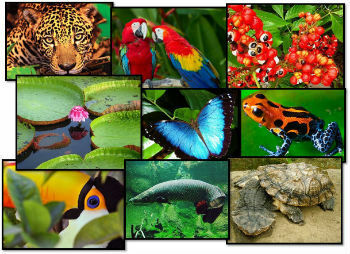Whales are marine mammals that belong to the order of cetaceans and are divided into two suborders. Mysticity have fins and the odontoceti have teeth.
They have many characteristics that are common to each other, regardless of the species:
- They have a thick layer of fat that helps maintain body temperature and store energy;
- Its skeleton is similar to that of large land mammals such as elephants;
- Because they don't have gills, like fish, they usually come to the surface to breathe;
- They communicate with each other through the emission of characteristic sounds.
whale species
See below the main features of 8 species of whales.
1. Blue Whale (Balaenoptera musculus)

THE Blue Whale it is the largest existing mammal, measuring an average of 30 meters in length and weighing up to 200 tons.
It has a blue-gray coloration, but in certain regions it can take on greenish-yellow tones due to the presence of certain microorganisms.
This whale species usually migrates to different regions according to the purpose. To feed, it swims towards cooler waters, such as the
Antarctica and the North Pacific; in order to reproduce, they usually swim to tropical regions, with milder temperatures.Normally living in pairs, the blue whale can be seen accompanied by groups of up to 60 individuals, and this situation occurs in feeding areas.
Because it has no teeth, the blue whale feeds mainly on small crustaceans, usually around 4 tons per day.
It is a species that has been showing decline, running the risk of becoming extinct. The main causes would be related to hunting.
2. Bryde Whale (Balaenoptera eden)

The bryde whale is a little known species, but its geographic distribution is wide. It is found in the Atlantic, Pacific and Indian oceans, especially because of its tropical waters.
It is one of the species of whale that can be seen on practically all the coast, but studies show that its presence is decreasing.
Averaging 15 meters in length and weighing up to 16 tons, this species of whale feeds on small fish, like sardines. Your body spends approximately 4% of its body mass daily, thus requiring a greater consumption of food.
Bryde whales live in large groups and do not usually travel great distances.
3. Sperm Whale (Physeter macrocephalus)
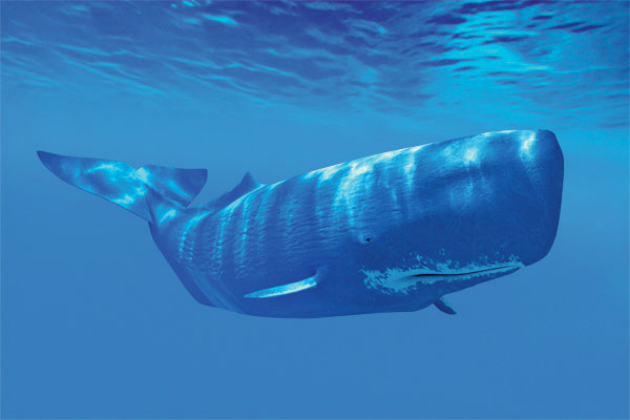
The sperm whale is the largest mammal with teeth, where the male can be up to 20 meters long and 45 tons, while the female reaches 17 meters and 14 tons.
Being one of the few species that can dive to high depths and stay between 45 minutes and 1 hour underwater, the sperm whale can spend more time searching for food, which consists of squid, octopus and fish.
It is considered a species vulnerable to extinction as a result of the commercial hunting it suffered in the 18th and 19th centuries. It is estimated that the death of approximately 30,000 whales in the 1960s is a consequence of this hunting period.
4. Fin whale (Balaenoptera physalus)
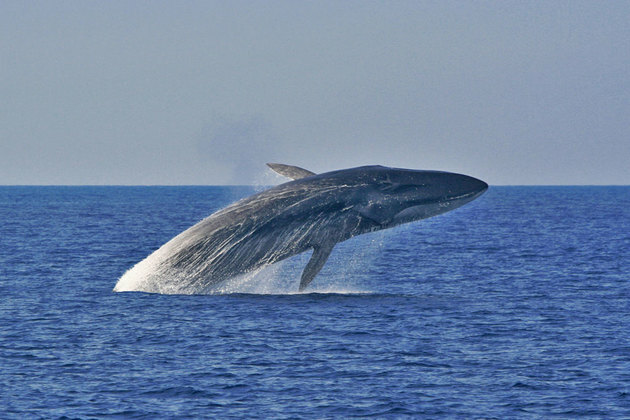
The fin whale is also known as the fin whale and its long body is characteristic, allowing this species to be faster in swimming and gain an advantage in capturing food. With up to 27 meters in length and an average weight of 70 tons, the fin whale is second only to the blue whale.
The predominant color of this whale is grey, as it becomes lighter from head to tail.
It is possible to find the fin whale in both polar and tropical regions, making it a species that lives in all oceans of the world.
The food is based on small crustaceans and zooplankton, since they have no teeth. All captured food is filtered and retained in the keratin plates in the mouth.
5. Right Whale (Eubalaena Australis)

THE right whale is a cetacean species that most frequents the southern Brazilian coast, especially the state of Santa Catarina. The female is larger than the male, with an average of 17 meters in length, has a black, rounded body and several calluses on the head, making this its main morphological characteristic.
It usually frequents warmer waters during reproduction, spending this time without feeding, since the feeding period occurs in colder waters.
The right whale spray is "V" shaped because the air it releases is hot, coming very quickly from the lungs and when added to the water that accumulates in the respiratory orifice turns into "V".
belonging to the suborder Mysticity, this whale's feeding is basically done by small crustaceans that are sucked and filtered when the right whale swims with its mouth open.
6. humpback whale (Megaptera novaeangliae)
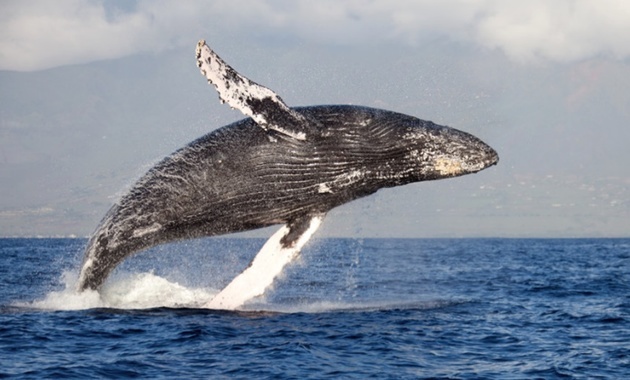
THE humpback whale it is a very common species in the waters of the northeastern coast, especially in Bahia. Also known as the humpback whale, it has an average length of 16 meters and can weigh up to 40 tons.
One of the characteristics of the humpback whale is its ability to jump almost full-body out of the water. Due to this peculiarity, its fins are compared to a bird's wings, reaching about 1/3 of the entire body.
Inhabiting all oceans, this species of whale migrates from polar waters to feed and, during winter, returns to tropical waters, where it lives the period of mating and reproduction.
7. Minke Whale (Balaenoptera acutorostrata)
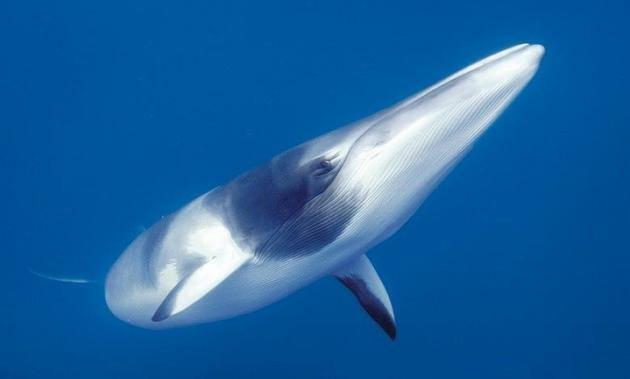
The minke whale is also known as the minke whale, being the smallest whale of the suborder Mysticity. Females are larger, between 8.5 and 8.8 meters, while males are about 8 meters.
The dorsal part of this species is usually in darker gray tones and the ventral area is lighter in color. Its head differs from other whales as it is more pointed and flatter.
Like other species, it can be found in all oceans, migrating only to feed and reproduce. Feeding is based on plankton and small fish.
8. Orca whale (orcinus orca)
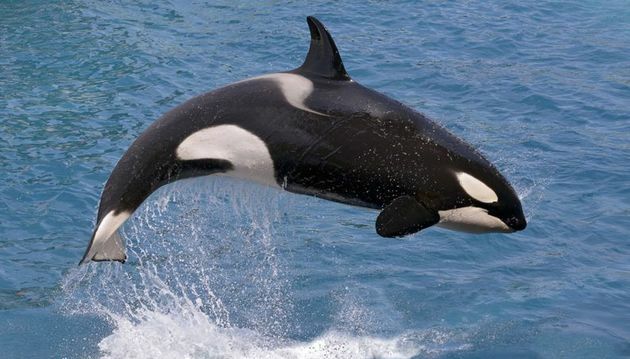
THE orca whale is a species that belongs to the dolphin family and is not considered a whale. Its length can reach 10 meters and its weight varies between 8 and 9 tons.
Large, this mammal has a strong dental arch that allows it to have a varied diet, especially sharks, dolphins, sea lions and even other whale species.
They live in deep, icy waters, especially in regions with polar weather, but they usually come to the surface frequently to feed and breathe.
Meet other animals that live in the polar regions:
- Penguin
- Polar Bear
Protection against whale hunting
Whales are hunted by several countries, but it was in the last century that this practice became more evident. One of the consequences of this action was the killing of more than 2 million whales, creating the risk of extinction for several species.
With the purpose of protecting whales, in 1986 the International Whaling Commission (CBI) declared the hunting of whales prohibited indefinitely. Even with this decision, countries like Japan, Norway and Iceland still carry out the practice.
In 2018, a meeting of the CBI was held in Florianópolis (SC), with the purpose of analyzing the proposed commercial release of whale hunting requested by Japan.
In view of the approval of more than 75% of the countries present at the meeting, the prohibition and guarantee of protection for the species was maintained.


